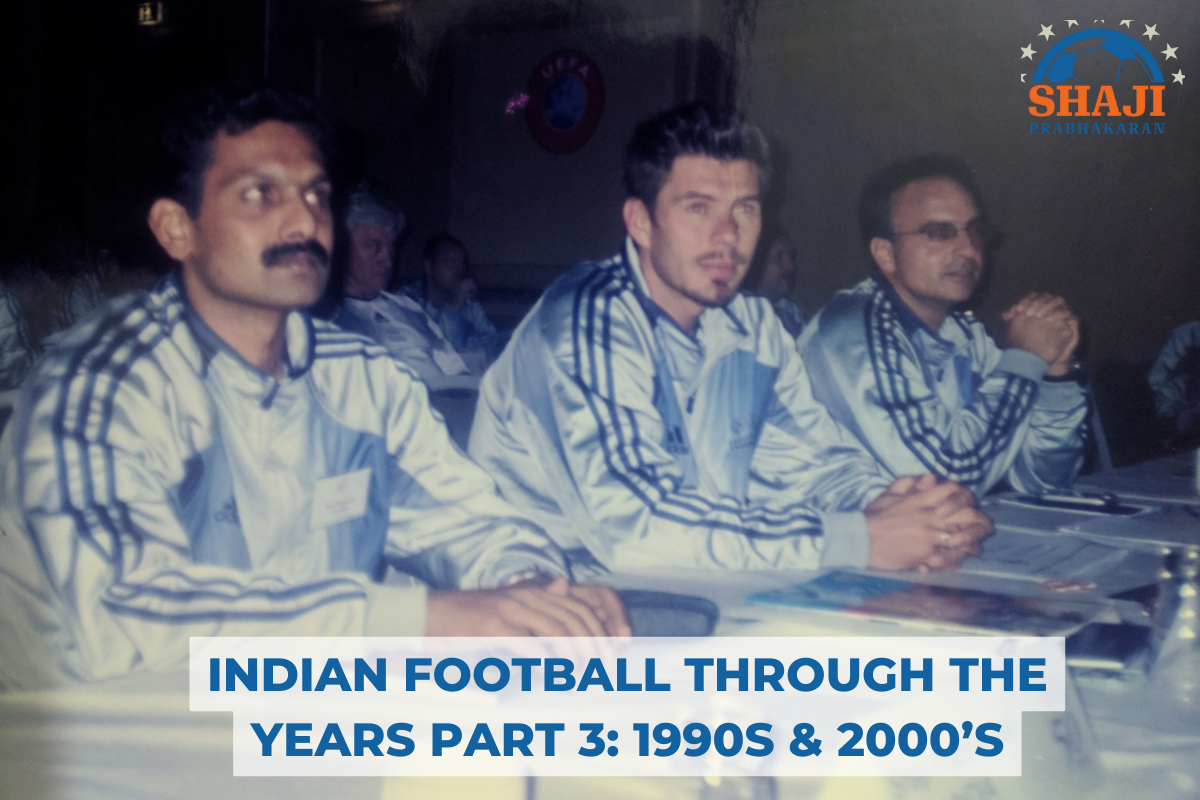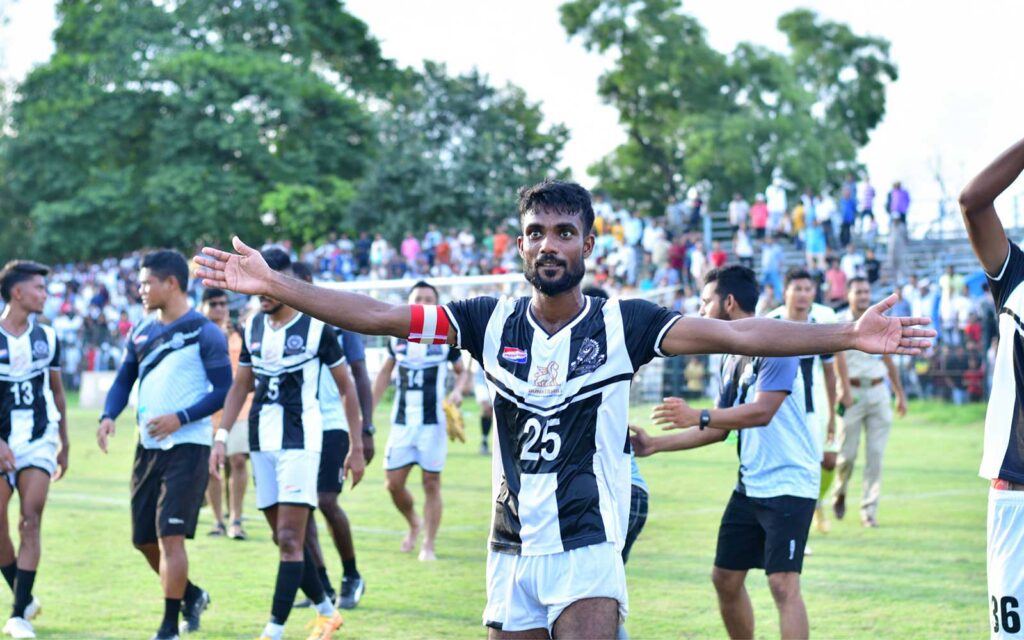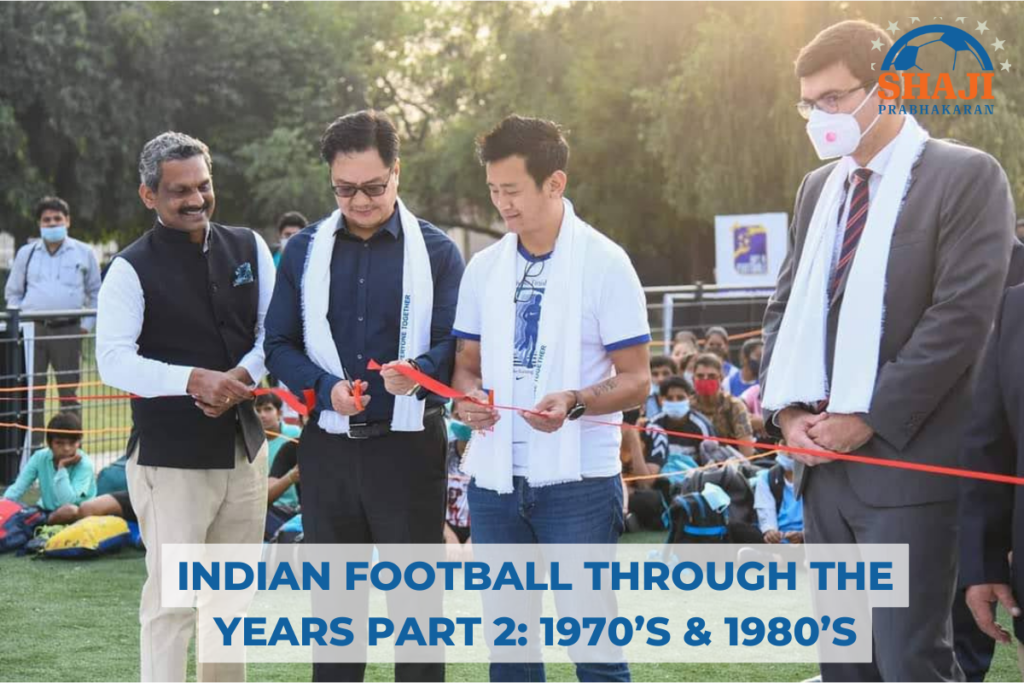At the start of the 90’s Indian football was already in transition of decline as Indian football couldn’t win anything creditable as they did during the 80’s. The new generation of Indian footballers had some great talents but times were different, with the advent of satellite channels in India fans and lovers of the game started to see European and world football live on TV. Further with the introduction of the FIFA rankings and live European football Indian fans and the public were able to see the huge gap that existed between India and world football. This situation played a role in fading the popularity of football in many parts of the country, which started in the mid-80s but peaked during the 90s. India won the inaugural SAARC Cup in 1993 in Lahore and finished runner-up in Colombo two years later. By 1997 the competition had been renamed as the SAFF Championship and India managed to win both the 97 and 99 edition of the tournament when they hosted it in Goa.
But this was just about the highlight Indian football got on the international stage during this period as they no more were good enough to qualify for the Asian Cup or the Olympics.
THE NATIONAL FOOTBALL LEAGUE Though football couldn’t achieve much success on the international stage domestically the governing body decided to launch a National League in 1996 (17 December 1996) for the first time in its history, which provided a big boost to domestic football. No doubt the domestic transfer market and players’ value went up significantly since 1997 and with Star TV broadcasting live Philips National League in 1996 football again hit the headlines for all the right reasons but unfortunately, the momentum gained and the euphoria of the NFL in 1996 could not be sustained, primarily due to the broadcaster’s not getting up linking facilities to broadcast the match live in 1997 in the second edition of the league. The start of the National League brought many changes in Indian football but clubs hardly brought any structure, or system or added any competency to engage fans to boost commercial revenues or focus on youth development or facility development. This situation did not help the clubs or Indian football to fill the gap and unfortunately, there was no club licensing system or any kind of regulation binding the clubs to adopt any best practices. Due to poor infrastructure and unprofessionalism from its clubs, the league suffered majorly, one of the clubs in the league, FC Kochin went defunct in 2002 after it was revealed that the club had not paid salaries to its staff and players on time. With the advent of the National League clubs outside Kolkata started recruiting better players and that is the reason JCT won the inaugural league in the 1996-97 season. Before that, it was only Kolkata, that would doll out record cash to sign players but with the start of the NFL the number of players receiving decent salaries went up significantly and that attracted new avenues, especially for the Northeastern players, that too predominantly from Manipur. It was not only the player’s salary that went up but also the coach’s salary went up significantly. The NFL created a demand for good domestic coaches including foreign coaches. Thus with the demand and level going up many ex-players started to take serious AFC Coaching License courses in India starting from the late 90’s.
And no doubt Goa has also thrown up many talented players during the 90’s such as Bruno Coutinho who is regarded as one of the best Goan players of the 90’s.
After the 2006-07 season, the National Football League was rebranded as the I-League for the 2007-08 season. The league’s first season consisted of eight teams from the previous NFL campaign and two teams from the second division to form a 10-team league. Oil and Natural Gas Corporation (ONGC), the title sponsors of the NFL, were named as the title sponsors of the I-League before the league kicked off in November 2007. IM VIJAYAN During the 90s Indian football saw many great talents come up who went on to create history as well .. IM Vijayan was one of the best players of the 90s and one of the top 5 players in Indian football history. He was one of the star attractions of the NFL and with his dazzling skills and goals, he was the darling of fans in many parts of India. Vijayan was crowned the Indian Player of the Year in 1993, 1997, and 1999, the first player to win the award multiple times. He made his debut in international football in the year 1989 and formed one of the deadliest forward lines with Baichung Bhutia that Indian football has ever seen. Vijayan was part of the victorious Indian team in the 1999 South Asian Football Federation Cup where he scored one of the fastest international goals in history during the tournament, hitting the net against Bhutan after only 12 seconds. IM Vijayan was also awarded the Arjuna Award in 2003. BAICHUNG BHUTIA Baichung Bhutia was the star power of the 90s and went on to become one of the best India has ever produced. Considered to be the torchbearer of Indian football in the international arena, he was nicknamed the “Sikkimese Sniper” because of his shooting skills in football.
Three time Indian Player of the Year IM Vijayan described Bhutia as “Gods gift to Indian football”
Bhutia became the first Indian footballer to sign a contract with a European club FC Bury and only the second player to play professionally after Mohammed Salim. Bhutia started his footballing career at East Bengal and won his first league title with JCT Mills. He is India’s most-capped player with 104 international caps to his name and in the 2009 Nehru Cup, he received his 100th international cap for India. Furthermore, he became the nineteenth footballer to be awarded the Arjuna Award by the Indian government in 1999. Bhutia was given a star-studded farewell as he played his last game with the national team against the German giants Bayern Munich on 10 January 2012 at the Jawaharlal Nehru Stadium, Delhi. Baichung Bhutia against Bayern Munich THE REBIRTH OF INDIAN FOOTBALL In 2003 Stephen Constantine was named the AFC Manager of the Month although India failed to qualify for the 2004 Asian Cup, the senior team shone in a silver medal-winning performance in the inaugural Afro-Asian Games with victories over Rwanda and Zimbabwe who were then 85 places ahead of India in the world rankings. The LG Cup win in Vietnam under Stephen Constantine was one of the few bright spots in the early part of the 2000s. It was India’s first victory in a football tournament outside the subcontinent after 1974. As a result Indian football steadily gained greater recognition and respect both within the country and abroad. But India could not do much when they lost to Pakistan and Bangladesh in the 2003 SAFF Cup and defeats in the 2006 World Cup qualifiers meant Stephen Constantine was sacked. Much travelled and experienced coach Bob Houghton was later appointed the national team coach in 2006, under Houghton India saw a huge revival in World Football as the team won the first its first ever Nehru Cup in 2007 beating Syria 1-0, and the following year they lifted the 2008 AFC Challenge Cup and qualified for the 2011 AFC Asian Cup. In August 2009 India won the Nehru Cup again beating Syria on penalties (6-5)



